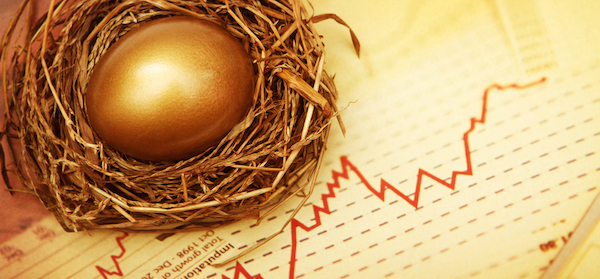With small gains in annual returns making a big dollar difference in retirement, new research suggests you should look for super funds with female leaders if you want a bigger nest egg.
The Superannuation Benchmarking Report from financial sector research group Rainmaker examined how fund performance related to the gender split of their leadership teams.
A survey of 50 superannuation funds found women made up only about one-third of leadership positions, such as chief executives, board chairs and senior managers.
However, Rainmaker found those super funds with a higher proportion of women in top jobs were outperforming other funds.
The 12 funds in the study with female CEOs and deputy CEOs outperformed the industry average by 0.3 per cent per annum in the three years to June 2020.
The best performing fund in that group outperformed the industry average by 2 per cent per annum over the same period.
“While 0.3 per cent per annum may not seem by much, if you’re a member of a women-led fund, you have a three-in-four chance of outperforming,” Rainmaker’s Alex Dunnin said.
Some of the top-performing super funds with more women in leadership were Aware Super, Commonwealth Superannuation Corporation, HESTA, Media Super and TASPLAN.
Mr Dunnin said it could reflect the fact that corporate Australia was, unfairly, far less tolerant of underperforming women.
“If there is a woman in that job, chances are she has had withstand massive obstacles.
“Survivorship bias, you could call it,” he hypothesised.
Aware Super CEO Deanne Stewart has a slightly different take on things, arguing research shows diverse groups of leaders lift company performance.
“Diversity really matters – it’s not just a policy, something nice you should do or a moral imperative, it creates diverse thinking,” she said.
Ms Stewart said that while the superannuation industry was ahead of other financial services in appointing women to top jobs, it still has a long way to go.
She said inherent biases that resulted in male leaders hiring men to leadership positions and a lack of female graduates seeing the sector as an attractive option were ongoing issues.
“Young people want to be part of something that is ambitious, really caring, and purpose driven,” she said.
“I often find women leaders balancing out male leaders, and attracting both of those aspects.
“If I think about our amazing women, the ability to attract and retain them is paramount to our really top performance.”
Women lag on super savings
The report also details the superannuation inequality still affecting Australian women.
In total, Australian women own $1.2 trillion of superannuation funds under management (FUM).
However, while women account for 53 per cent of retiree members, Rainmaker found they own just 44 per cent of retiree superannuation FUM.
The gap also does not appear to be shrinking across the generations.
Younger women are also worse off, making up half of all superannuation accounts but only owning 43 per cent of funds in the millennial age groups’ accounts.
“Women own four in every $10 of Australia’s superannuation wealth,” Rainmaker executive director Alex Dunnin said.
The amount of super owned by women is up from $800 billion in 2015.
But the amount of super owned by men has also increased to $1.7 trillion in 2020 compared to $1.2 trillion in 2015.
Superannuation inequality is inextricably linked to the gender pay gap, and while that gap recently narrowed, Australian women continue to earn less.
Alison Pennington, senior economist at the Australian Institute’s Centre for Future Work, warned that the economic shadow of COVID-19 meant the inequality was set to get worse.
“Women lost jobs at a greater rate than men when the pandemic hit, and as the economy has recovered, are returning to fewer jobs offered on a more casualised basis,” Ms Pennington said.
“The gendered employment recovery is disproportionately leaving women with less hours, security and pay than men.”
A report by the Grattan Institute on the gendered impact of the COVID-19 crisis found women who lost their job or left work in the recession faced a huge financial penalty.
“The COVID hit compounds the effects of other career breaks,” the report found.
“Six months out of work can add another $100,000 to the average $2 million lifetime earnings gap between men and women with children in Australia.”
Both the Grattan Institute and Australia Institute are calling for state and federal governments to focus investment in creating jobs for women, free childcare and further stimulus for female-dominated industries.
Rainmaker’s report found women’s super fund memberships reflect their over-representation in the retail, health, education and hospitality industries, as well as the public sector.
The most popular fund for women was retail industry fund Rest Super, which has more than 1 million female members.


